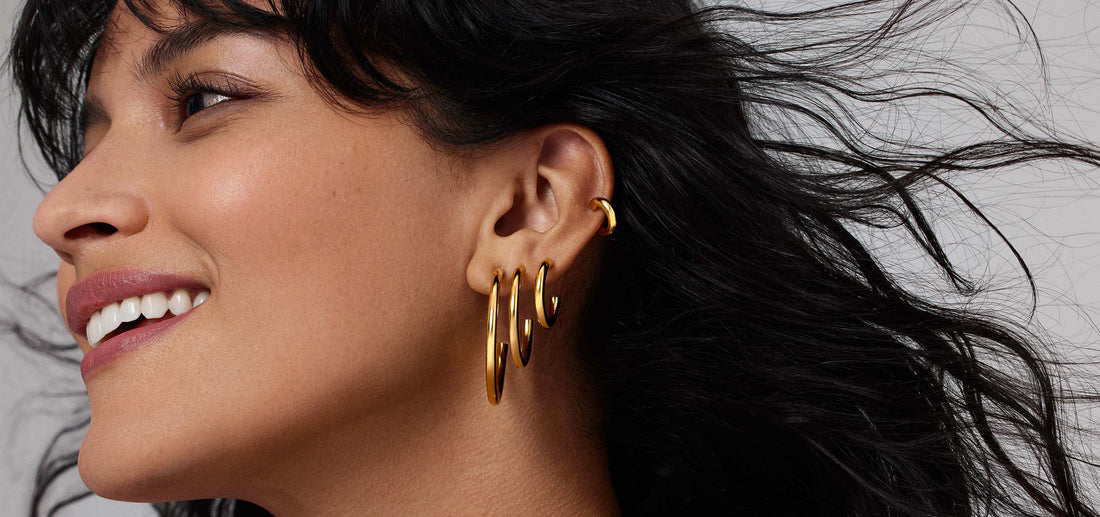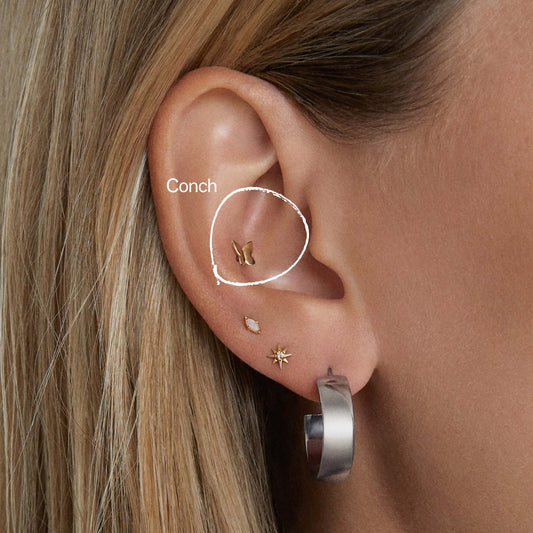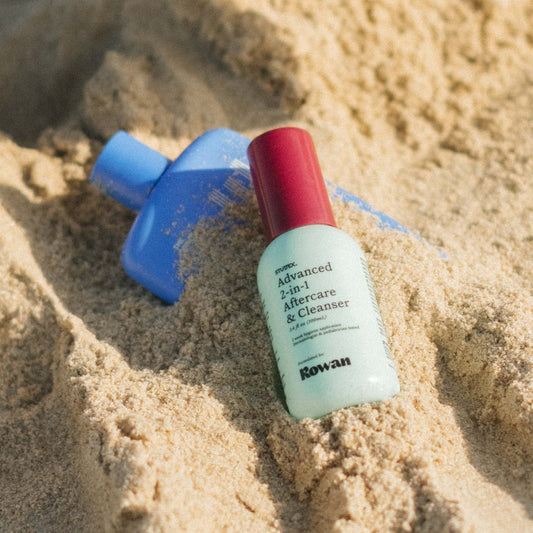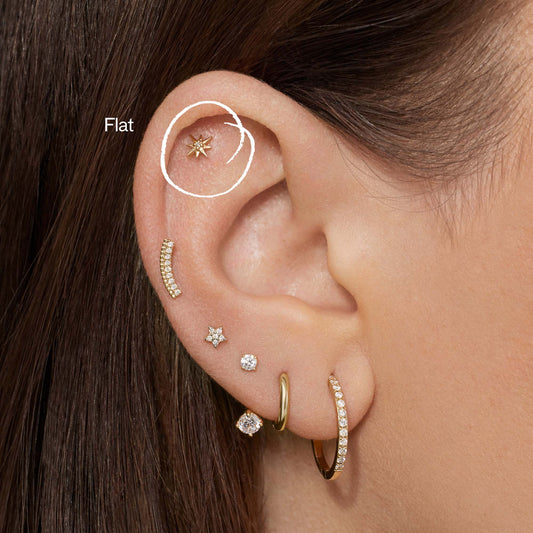The Difference Between a Cartilage Ear Piercing and an Earlobe Piercing
Cartilage vs Lobe piercing… how are they different?

There are so many different types of ear piercing placements! And they are all defined by the ear’s anatomy. It is important to understand that piercings in different parts of the ear can have different piercing techniques, outcomes, and aftercare processes. Setting expectations ahead of time, and doing proper diligence on the type of ear piercing you want will ensure a better ear piercing outcome.
Piercing Placements

The most obvious and common piercing placement is the ear lobe. The ear lobe (lobulus auriculae) is the soft, fleshy part of the lower outer ear.
While the cartilage may seem like one location, there are actually several different piercing placements within the cartilage that are defined by ear anatomy.
The auricle is the visible part of the ear that resides outside the head and is composed of a plate of elastic cartilage, a thin layer of fat and connective tissue supplied by numerous nerves. The helix is the prominent rim of the auricle and a very popular location for cartilage piercings. This is often called an upper ear piercing or high ear piercing.
A flat piercing is a cartilage piercing located in the flat area of the upper inner side of the ear, next to the helix and below the upper rim.
A mid-helix piercing is a piercing that is located in the middle section of cartilage of the ear between the upper lobe and the upper cartilage and sits near the conch.
A conch piercing is a cartilage piercing in the middle of the ear, in the area called the concha, which resembles a conch shell.
The tragus is a small, cartilaginous prominence that projects in front of the ear canal. It is covered with skin and is movable.
A forward helix piercing is a piercing in the upper outer cartilage of the ear, above the tragus, positioned toward the front where the ear curves near the face. A regular helix piercing generally is placed on the rim farthest away from the face where the forward helix is placed on the rim closest to the face.
Healing Time
Cartilage and earlobes not only look and feel different, but they also heal differently. Ear lobes have a good amount of blood flow and the piercing site heals quicker. The initial healing process for the ear lobe site takes as little as 3 weeks with the use of our Advanced Aftercare Solution; however the complete healing process can take anywhere from 6-12 months.
By contrast, the cartilage has a limited blood supply so healing is slower and in contrast to the ear lobe, it may take 8-12 weeks for the initial healing process to occur and up to 12 months or more for the cartilage to fully heal. The ear cartilage will stay tender for up to one full year after piercing.
Modality
We offer two types of piercings - hand-pressurized device and needle.
The needle piercings are performed with a single-use hollow bore sterilized needle and are recommended for all parts of the ear. At Rowan, we pierce with flat back earrings specifically designed for optimal healing and comfort.
We also offer a hand-pressurized device piercing. Our device is in the complete control of the nurses hand to guide, position, and pierce safely. It’s quicker (and helpful for those who may have a phobia of needles) and can be used to pierce the entire outer perimeter of the ear. These piercings utilize butterfly back or bell-shaped back earrings. Device piercings cannot be done on the forward helix, conch, tragus, or flat.
Aftercare
The aftercare regimen is similar for earlobe or high ear piercings with a few nuances per placement. Overall maintaining excellent hygiene and care in addition to monitoring the healing process and managing any pain is the main take-home point in ear piercing.
The aftercare regimen differs by modality and placement. For lobe piercings that were done with a device only, it’s important to rotate the earring a full 360 during your daily cleanings. For cartilage piercings done by device or needle and lobe piercings done by needle, do not twist the jewelry as this can cause scarring or make the piercing heal more slowly.
At Rowan, we’re proud that less than 1% of our ear piercings result in adverse reactions (compared to the industry average of 30%).



